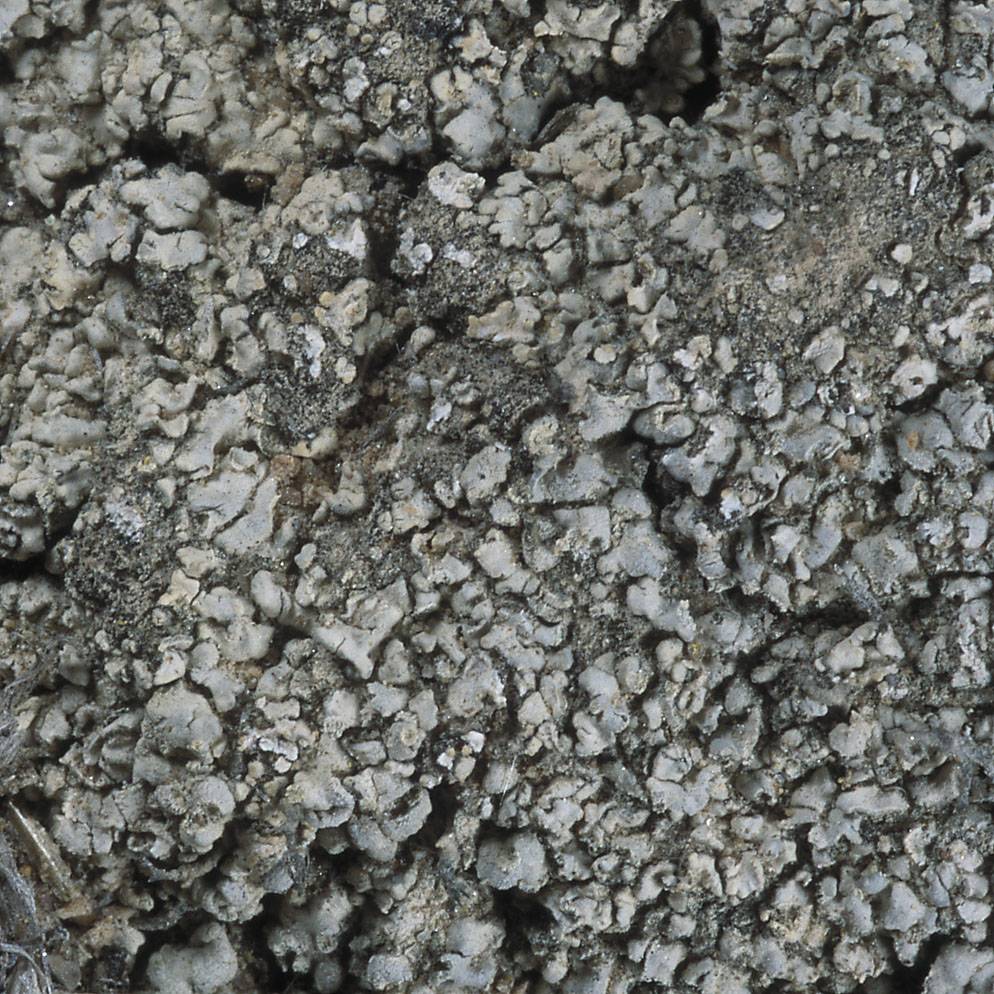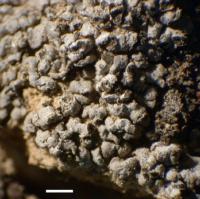
Consortium of Lichen Herbaria
- building a Global Consortium of Bryophytes and Lichens as keystones of cryptobiotic communities -
- Home
- Search
- Images
- Species Checklists
- US States: O-Z >
- US National Parks
- Central America
- South America
- US National Parks
- Southern Subpolar Region
|
|
|
|
Family: Trapeliaceae
|
Nash, T.H., Ryan, B.D., Gries, C., Bungartz, F., (eds.) 2004. Lichen Flora of the Greater Sonoran Desert Region. Vol 2. Thallus: lobulate or areolate in central parts and effigurate at the margin squamules: ±round to ±elongate, 0.15-0.5 mm thick and 0.3-1.5 mm in diam, appressed or marginally downrolled or ascending, irregularly incised surface: cream to light gray or more often medium gray, usually with a dull superficial necrotic layer, occasionally appearing somewhat pruinose, sorediate soralia: dark gray to black or greenish black, discrete, +round, slightly concave to convex, composed of soredia that are microscopically olive-black, K+ yellow-brown, round to somewhat elongate 18-28 x 8-18 µm upper cortex: usually distinctly developed, 9-17 µm thick, composed of densely entangled hyphae, outermost epinecral layer hyaline, 3-8 µm thick, inner part often with a brown layer 5-13 µm thick; algal layer: 40-140 µm high, inspersed with crystals medulla: 100-250 (-300) µm thick; photobiont: 6-13 µm in diam. Apothecia: rare, similar to T. glaucopholis Pycnidia: rare, similar to those found in T. glaucopholis Spot tests: thallus K-, C+ red, KC+ red, P-, UV- Secondary metabolites: gyrophoric acid. Substrate and ecology: on soil, soil over rock, or moss over rock in grassland and shrub steppe, generally in areas little disturbed by grazing World distribution: southern Washington and eastern Idaho south to southern California; fairly common between the Cascade Range and Rocky Mountains in Oregon and Washington; rare elsewhere Sonoran distribution: southern California on San Clemente Island and widely scattered northward in the coastal ranges. Notes: Morphologically T. steppica is similar to T. glaucopholis and sometimes occurs with it. Trapeliopsis steppica differs in the presence of dark, roundish soralia. The upper cortex of T. glaucopholis averages about twice as thick as the cortex in T. steppica. Colonies are frequently smaller and more scattered than in T. glaucopholis. The upper surface is usually gray, while T. californica can be beige or light gray, sometimes darkening to gray. DNA sequences of the ITS show two distinct types that are present in two clades. Further studies are needed to resolve whether this genetic diversity and its relationship with T. glaucopholis. |
|
|
|
Powered by Symbiota































